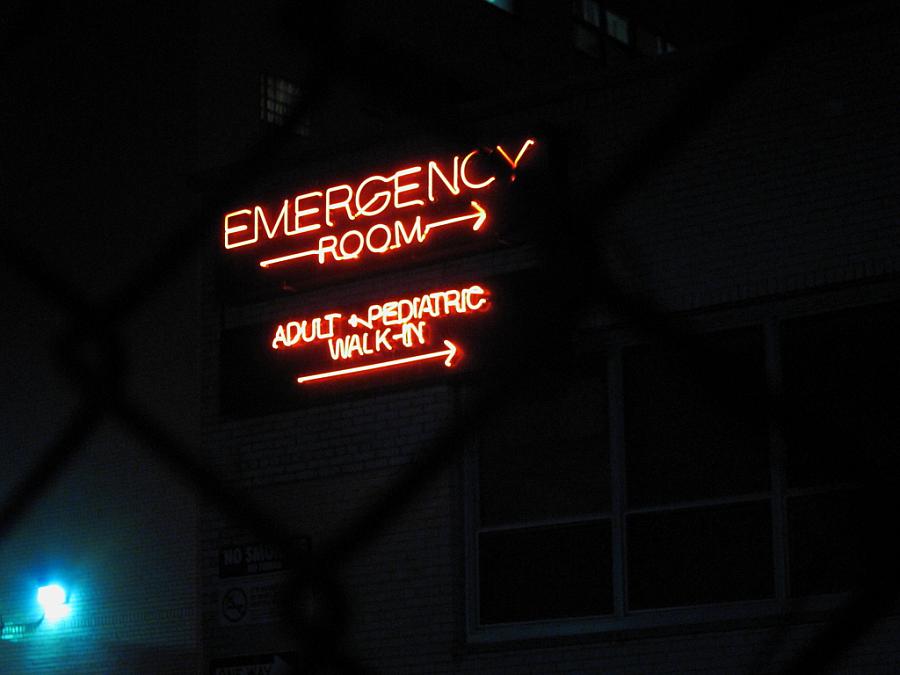Even as the epidemic rages, alarming numbers of teens leave ER with opioid prescriptions
One morning a few years ago, my 17-year-old daughter woke up with sharp pain in her abdomen. We wound up in the emergency room, where a nurse quickly started her on a morphine drip. It was my daughter’s first exposure to an opioid and as it took effect, a look of bliss spread across her face. It alarmed me more than whatever was causing the pain.
A few hours and many tests later the problem was diagnosed as a burst cyst — not dangerous, just uncomfortable. We went home with a prescription for hydrocodone, but I decided to give her an over-the-counter painkiller and a heating pad, and that worked fine.
My daughter’s experience in the ER is not unusual. A new study reveals just how often teens and young adults receive opioid prescriptions in emergency rooms, even as the crisis of addiction has worsened. From 2005 to 2015, ER doctors prescribed hydrocodone, oxycodone, codeine and other narcotic painkillers for nearly 15 percent of patients aged 13 to 22 years. For some conditions, doctors routinely prescribed opioids. A stunning 60 percent of dental complaints resulted in an opioid prescription.
Joel Hudgins, the study’s lead author and instructor of pediatrics and emergency medicine at Harvard Medical School, said he was surprised by the numbers in light of mounting evidence that young people are at high risk of opioid misuse and addiction after taking an opioid for a medical reason. “They’re treated in a way that’s very similar to adults, which, given their risk profile, is not the wisest approach,” he said.
Hudgins and his colleagues analyzed data from annual government surveys of hospital emergency rooms and outpatient clinics across the country. Outpatient clinics prescribed opioids for young patients at a much lower rate, 2.8 percent. ERs prescribed opioids for 13- to 17-year-olds less often than for 18- to 22-year-olds, and cut back slightly on the prescriptions in 2014, as opioid overdose became the leading cause of accidental death in the U.S. Yet even then an adolescent was more likely to walk out of the ER with an opioid prescription than a decade earlier.
How can that be? The study was not designed to evaluate the appropriateness of the prescriptions. And the researchers weren’t surprised to find that painful injuries such as bone fractures and sprains were among the problems treated most frequently with opioids. Nevertheless, Hudgins and the team were astonished to discover that young people often received opioid prescriptions for common ailments such as headaches, sore throats and urinary tract infections.
“In my experience, those are not conditions for which we’d ever prescribe opioids in our setting,” Hudgins said. “There’s data to show that Tylenol or ibuprofen works just as well.”
Part of the problem, Hudgins said, is that national guidelines for opioid prescribing are geared to adults and don’t address the particular needs of — and dangers to — teens.
The study was published in the journal Pediatrics on Tuesday, which, coincidentally, also marked the start of the nation’s first trial over whether a pharmaceutical company — Johnson & Johnson — is legally responsible for the opioid epidemic. With anguished testimony from people whose lives have been devastated by addiction and fatal overdoses, the trial dramatically illustrates what Hudgins’ research documents in dry statistics: America’s misplaced faith in narcotic pain medications and the collective failure to appreciate the risks.
Hudgins and the team were astonished to discover that young people often received opioid prescriptions for common ailments such as headaches, sore throats and urinary tract infections.
Hudgins is an emergency room and the dad of two young children. He understands the pressure doctors feel when a young patient is in pain and a parent pleads for relief. “It’s a tough spot,” he said. “Parents often come in and they said they’ve tried ibuprofen and other things. As a physician, you’re pressed for time. You’re trying to solve the problem. So maybe you write the opioid prescription.”
He also understands that many parents find it difficult to challenge a doctor’s recommendation, especially when their child hurts. “I hope this study empowers parents of adolescents to push their providers. Are there non-narcotic alternatives? How many days are these narcotics needed? What’s the best way to dispose them? Parents can ask those questions before children are prescribed the drugs.”


